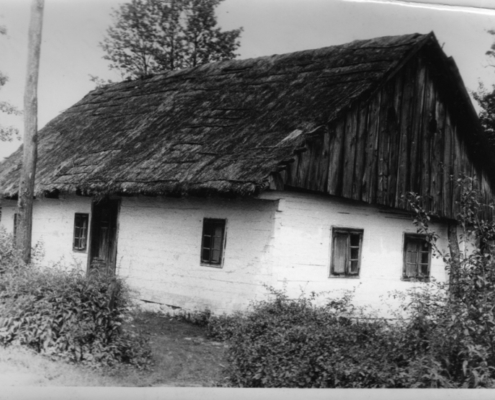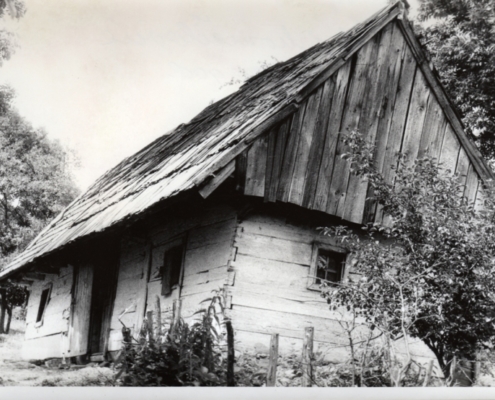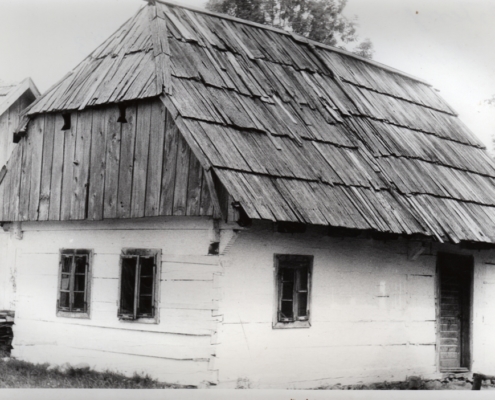STANOVANJE U OGULINSKOM KRAJU U 19. I POČETKOM 20. STOLJEĆA
Ogulinski kraj nastanjivali su ga uglavnom stočari, poljodjelci i drvodjelci. Tipične seoske kuće ogulinskog kraja građene su od drvenog i kamenog materijala. Drvo se upotrebljavalo u gradnji gornjih, a kamen u gradnji donjih zona kuće.
Najstarije seoske kuće bile su jednoprostorne i imale su otvoreno ognjište. U jednoj strani kuće je bila smještena stoka odvojena samo pregradom od ukućana. Prvi korak u razvoju stanovanja ogleda se u gradnji dvoprostornih kuća, gdje se uz prostor s vatrom (ognjištem) dograđuje soba za spavanje. U drugoj polovici 20. stoljeća pojavljuje se metalni štednjak (šparhet), u ogulinskom kraju poznat pod nazivom koza.
Kuće su najprije bile pokrivene slamom, uglavnom od raži. Kvalitetniji i trajniji bio je pokrov od šindre. Šindra se dobivala cijepanjem trupaca dužine do 1 metra sjekirom. Takav krov je bio čvršći i trajniji od slamnatog.
Unutrašnjost kuće je bila skromna. Osim pokućstva i alata nužnog za svakodnevni život (stola, stolica, postelje, kredenca s posuđem, škrinje, tkalačkog stana i dr.) sastavni dio interijera su bile i svetačke slike.










